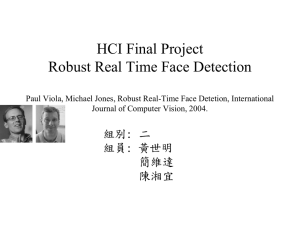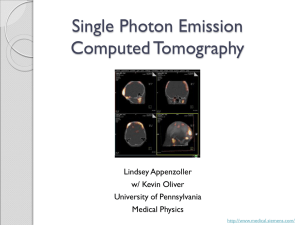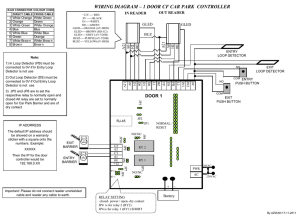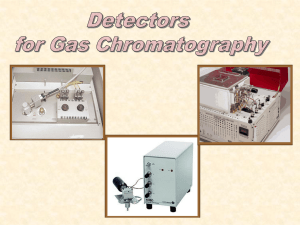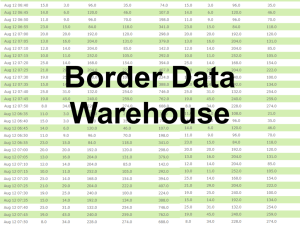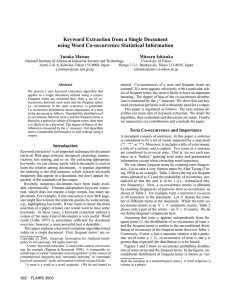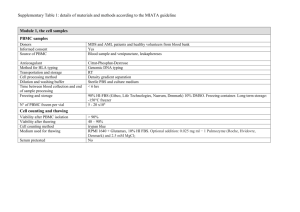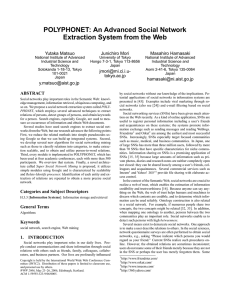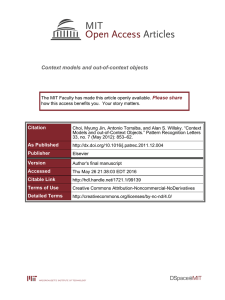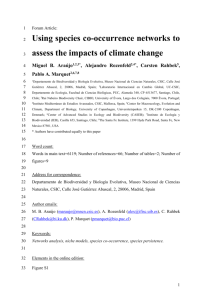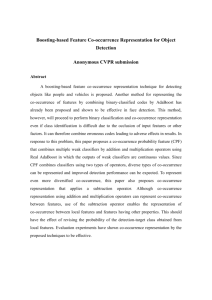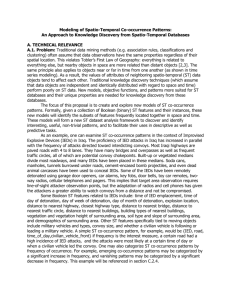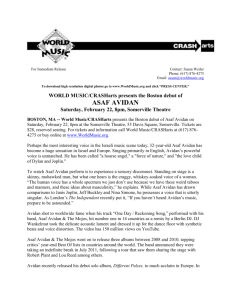Chen_Ding_Xiao_Han_cvpr13
advertisement
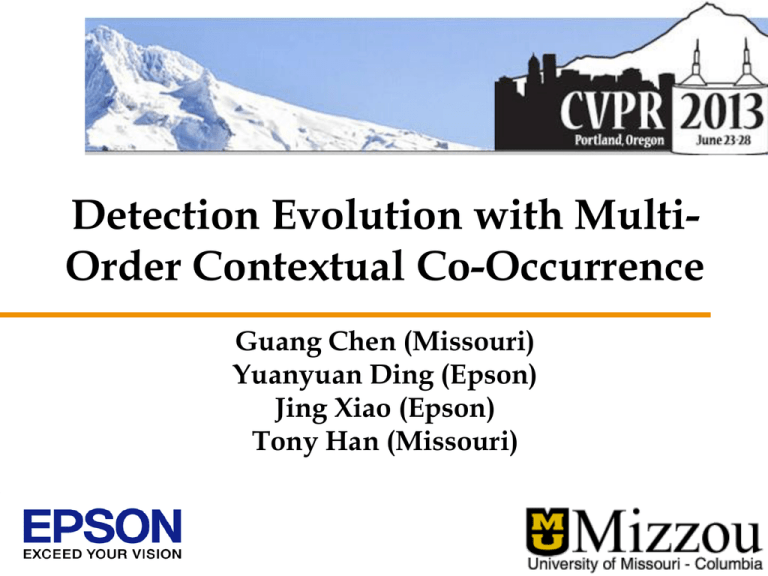
Detection Evolution with MultiOrder Contextual Co-Occurrence Guang Chen (Missouri) Yuanyuan Ding (Epson) Jing Xiao (Epson) Tony Han (Missouri) Object Detection • Sliding Window Based Approach – Classifiers and features are typically inside the window. • Context Helps – Context outside the sliding window can be used to achieve better performances. 1 Context in Computer Vision • High Level Context – Semantic Context – Geometric Context [Rabinovich et al, 2007][Yao & Fei-Fei, 2010] [Hoiem et al, 2006] • Low Level Context – Pixel Context – Shape Context • Murphy et al, 2003 • Hoiem et al, 2006 • Avidan, 2006 • Shotton et al, 2006 • Rabinovich et al, 2007 • Oliva & Torralba, 2007 • Heitz & Koller, 2008 • Desai et al, 2009 • Divvala et al, 2009 • Li, Socher & Fei-Fei, 2009 • Marszalek et al, 2009 • Bao & Savarese, 2010 • Yao & Fei-Fei, 2010 • Tu & Bai, 2010 • Li, Parikh & Chen, 2011 • Wolf & Bileschi, 2006 • Belongie et al, 2000 2 Classification Context for Segmentation • Spatialboost and Auto-context – Integrate classifier responses from nearby individual pixels for pixel level segmentation or labeling Spatial boost [Avidan 2006] Auto-context [Tu & Bai, 2010] 3 Classification Context for Object Detection • Contextual Boost [Ding & Xiao, 2012] – Directly uses the detector responses Image Context + Adaboost Image Context Multi-scale HOGLDP for Each Scan Window Contextual Boost Adaboost Classification Classification Context Based on Image Context Responses at Scale & Spatial Neighborhood Adaboost Classification Based on Augmented Context 4 Co-Occurrence Context • Can we further exploit co-occurrence information given only detectors for a single object type? 5 Co-Occurrence Context • Co-Occurrence from Detector Response Map. 6 Our Contribution • An Effective and Efficient Multi-Order Co-Occurrence Context Representation Using a Single Object Detector. 7 Our Contribution • An Effective and Efficient Multi-Order Co-Occurrence Context Representation Using a Single Object Detector. • Multi-Order Contextual CoOccurrence (MOCO) – 0th order: Classification Context – 1st order: Randomized Binary Comparison – High order: Co-Occurrence Descriptor 8 Constructing MOCO 9 0th Order Context • Directly Using Classifier Responses Classifier response map (window width=25pixels) width=100pixels) width=50pixels) 0th Order Context • Define Scale and Space Neighborhood – Spatial (x, y) – Scale (l) P y l x 11 1st Order Context • Comparison of Response Values P 12 1st Order Context • Randomized Arrangement 13 High Order Context • 1. Closeness Vector • 2. Histogram 14 High Order Context • 3. High Order Representation – Tensor Product of Normalized Histogram 15 Detection Evolution • Bootstrap training samples using detector responses from the previous iteration. • Add MOCO context from previous iteration as additional features. 16 Baseline Detector • Any Object Detection Algorithm Can be Used as Baseline Detector. 17 Baseline Detector • Any Object Detection Algorithm Can be Used as Baseline Detector. • Deformable-Parts-Model [Felzenszwalb et al, 2010] – Inner Context: Parts Models Encodes Relationship between Parts. – Outer Context: MOCO deals with CoOccurrence among Scanning Windows 18 Experiments • Datasets – PASCAL VOC 2007, 20 Object Categories – Caltech Pedestrian • Deformable-Parts-Model – Default setting ( 3 components, each with 1 root and 8 part filters) 19 Experiment – 1st Order • 1st Order & Context Neighbor Size 20 Experiment – 1st Order • Pairwise Comparison: Arrangements 21 Experiment – High Order • High Order Context – Dimension 22 Experiment – Combinations • Combinations • Iterations 23 Comparison on Caltech Dataset 24 Comparison on PASCAL’07 • Mean AP on 20 Categories 25 Conclusion • An Efficient Context Representation – Only Relying on Detectors for a Single Object Type – Combining Deformable Parts Model to Model both inner and Outer Context around Detection Window • Future Work – Exploit Context With Detectors of Multiple Object Types? 26 Questions? Thanks for your attention! 27
